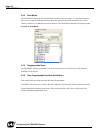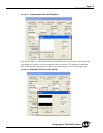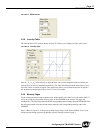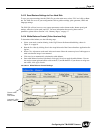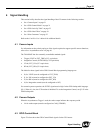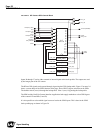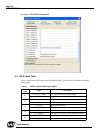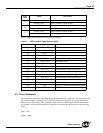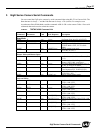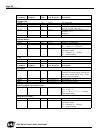
Page 21
TM-4200GE Software
Signal Handling
4 Signal Handling
This section briefly describes the signal handling of the GE cameras in the following sections:
• See “Camera Inputs” on page 21
• See “GPIO Control Block” on page 21
• See “GPIO Look-Up Table” on page 23
• See “GPIO Label Table” on page 24
• See “Pulse Generators” on page 25
Refer to the Cam2Net User’s Manual for additional details.
4.1 Camera Inputs
For information on the polarity and type of the signals required to support specific camera functions,
refer to See “Asynchronous reset” on page 46.
The TM-4200GE has four externally controllable standard signals:
• Trigger (VINIT or EXT_TRIG) (CC1 equivalent)
• Integration Control (INTEG/ROI) (CC2 equivalent)
• VD in (EXT_VD) (CC3 equivalent)
• HD in (EXT_HD) (CC4 equivalent)
The labels for these signals in the GPIO Control Block programming language are:
• I0, for VINIT (must be configured as EXT_TRIG)
• I1, for VD in (must be configured as EXT_VD)
• I2, for HD in (must be configured as EXT_HD)
• I4, for Integration control (must be configured as INT)
For normal exposure operation, the INTEG signal must be high. In the GPIO lookup table language:
Q5=1. When it is low, the CCD readout is inhibited. To use the Integration Control, set Q5=I3 in the
GPIO lookup table.
4.2 Camera Outputs
When the Asynchronous Trigger is used, the strobe output indicates the exposure period.
• I-4 for strobe output (must be configured as CAM_STROBE)
4.3 GPIO Control Block
Figure 23 below shows the GPIO Control Block signals for the GE Cameras.




